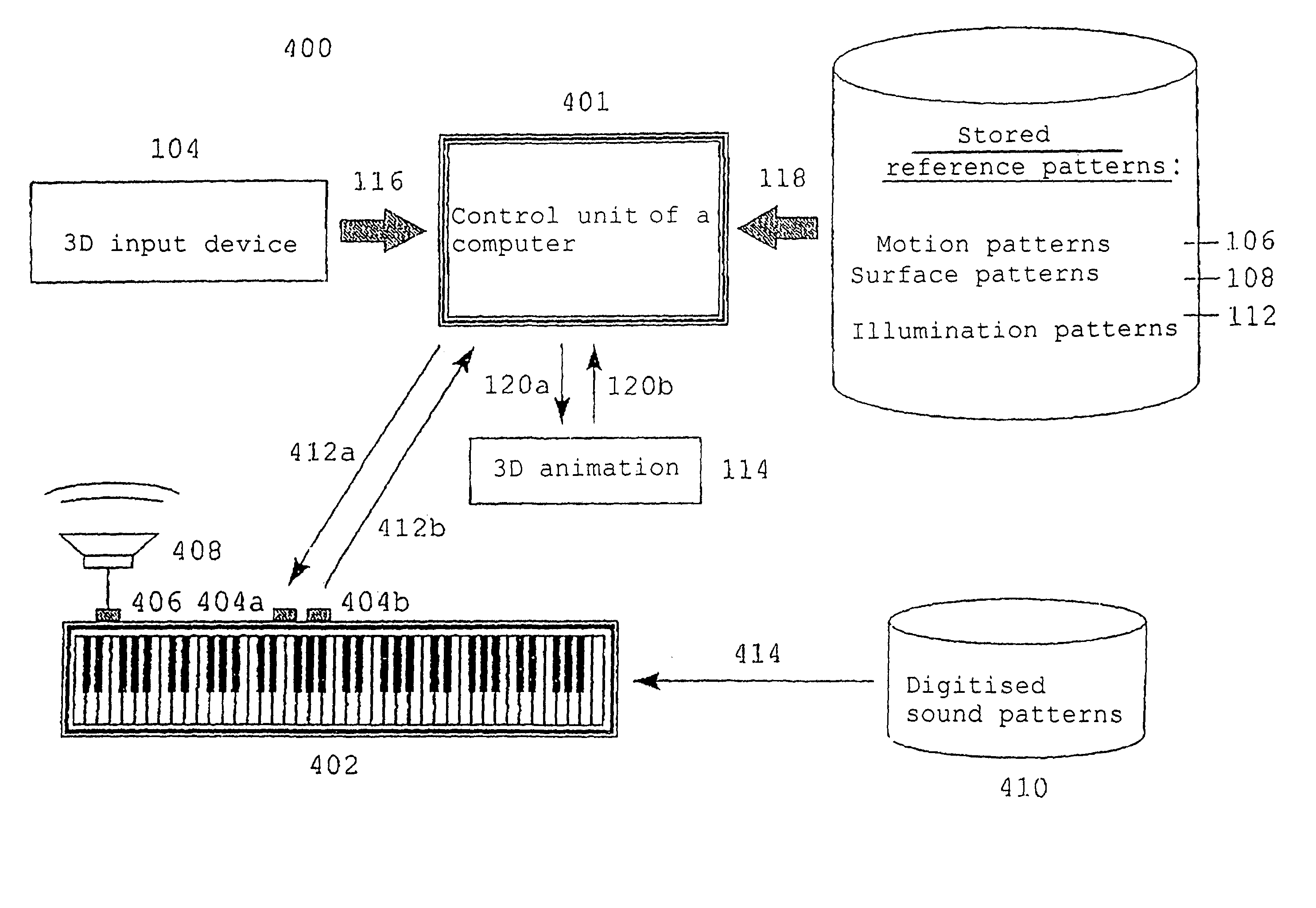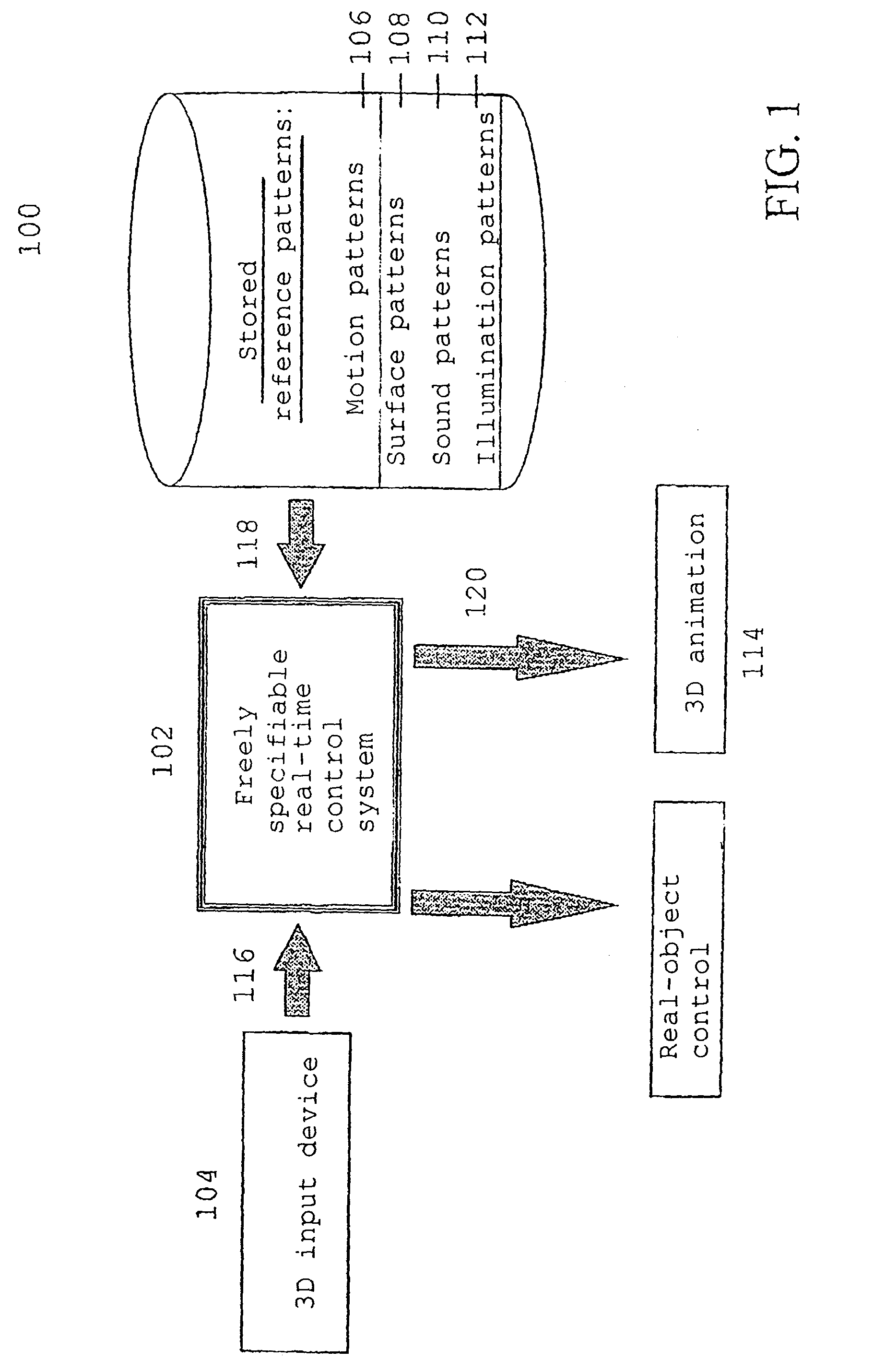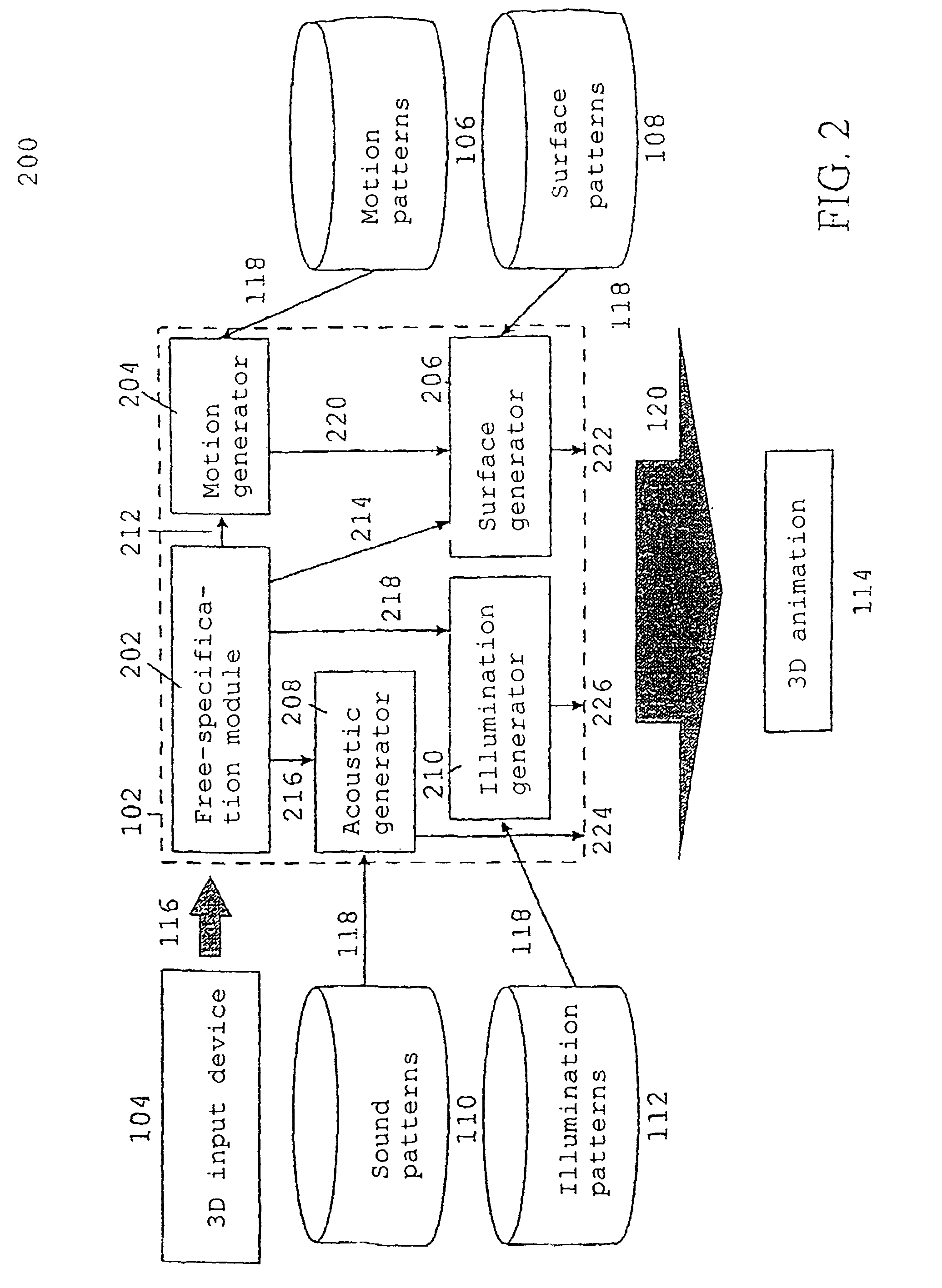Freely specifiable real-time control
a real-time control and free-speech technology, applied in the field of graphical visualisation and real-time control, can solve the problems of inability to handle information no longer handled by users, insufficient adaptation of machines, and performance drop, and achieve the effect of simplified real-time control of electronic generated audio signals, convenient and reliable operation processes, and high playback quality
- Summary
- Abstract
- Description
- Claims
- Application Information
AI Technical Summary
Benefits of technology
Problems solved by technology
Method used
Image
Examples
Embodiment Construction
[0140]In the following the functions of the subassemblies contained in a first exemplary embodiment of the present invention, as illustrated in FIGS. 1 to 5, will be described in more detail.
[0141]Having reference to FIG. 1, the present invention will firstly be elucidated schematically. The man / machine interface is represented by the input device 104. This is, in particular, a so-called 3D input device which, for example, is able to generate control signals 116 for six mutually independent degrees of freedom if it is appropriately manipulated by a user. These degrees of freedom include, for example, three translatory degrees of freedom, which in the following are designated as x, y and z, and also three rotatory degrees of freedom, which in the following are designated as φx, φy and φz. In this connection the variables x, y and z designate the orthogonal axes of a three-dimensional Cartesian coordinate system. The latter can be described mathematically as a three-dimensional vector...
PUM
 Login to View More
Login to View More Abstract
Description
Claims
Application Information
 Login to View More
Login to View More - R&D
- Intellectual Property
- Life Sciences
- Materials
- Tech Scout
- Unparalleled Data Quality
- Higher Quality Content
- 60% Fewer Hallucinations
Browse by: Latest US Patents, China's latest patents, Technical Efficacy Thesaurus, Application Domain, Technology Topic, Popular Technical Reports.
© 2025 PatSnap. All rights reserved.Legal|Privacy policy|Modern Slavery Act Transparency Statement|Sitemap|About US| Contact US: help@patsnap.com



